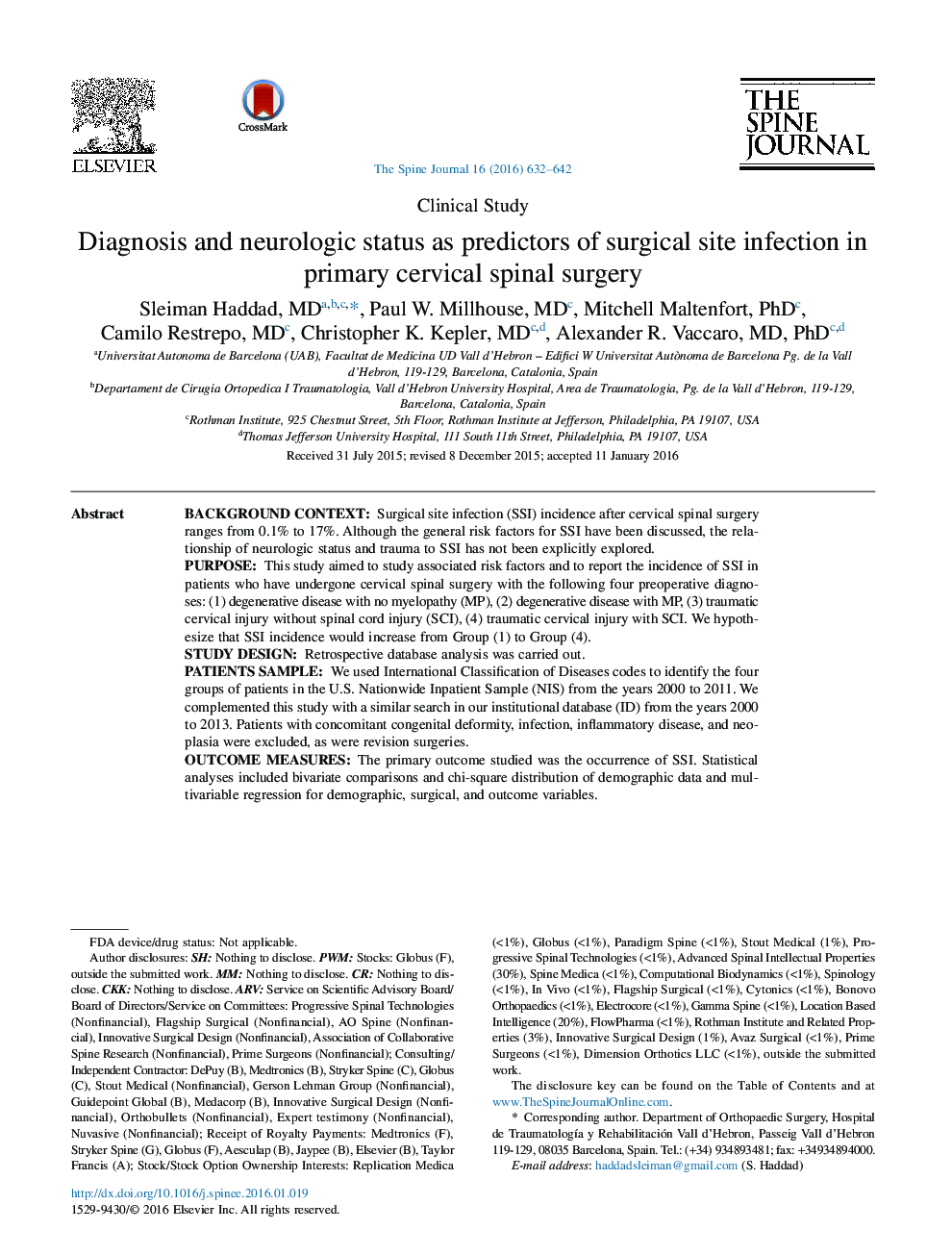| کد مقاله | کد نشریه | سال انتشار | مقاله انگلیسی | نسخه تمام متن |
|---|---|---|---|---|
| 4096121 | 1268552 | 2016 | 11 صفحه PDF | دانلود رایگان |
Background ContextSurgical site infection (SSI) incidence after cervical spinal surgery ranges from 0.1% to 17%. Although the general risk factors for SSI have been discussed, the relationship of neurologic status and trauma to SSI has not been explicitly explored.PurposeThis study aimed to study associated risk factors and to report the incidence of SSI in patients who have undergone cervical spinal surgery with the following four preoperative diagnoses: (1) degenerative disease with no myelopathy (MP), (2) degenerative disease with MP, (3) traumatic cervical injury without spinal cord injury (SCI), (4) traumatic cervical injury with SCI. We hypothesize that SSI incidence would increase from Group (1) to Group (4).Study DesignRetrospective database analysis was carried out.Patients SampleWe used International Classification of Diseases codes to identify the four groups of patients in the U.S. Nationwide Inpatient Sample (NIS) from the years 2000 to 2011. We complemented this study with a similar search in our institutional database (ID) from the years 2000 to 2013. Patients with concomitant congenital deformity, infection, inflammatory disease, and neoplasia were excluded, as were revision surgeries.Outcome MeasuresThe primary outcome studied was the occurrence of SSI. Statistical analyses included bivariate comparisons and chi-square distribution of demographic data and multivariable regression for demographic, surgical, and outcome variables.ResultsA total of 1,247,281 and 5,540 patients met inclusion criteria in the NIS database and the ID, respectively. Overall SSI incidence was 0.73% (NIS) versus 1.75% (ID). Surgical site infection incidence increased steadily from 0.52% in Group (1) to 1.97% in Group (4) in the NIS data and from 0.88% to 5.54% in the ID. Differences between diagnostic groups and cohorts reached statistical significance. Surgical site infection was predicted significantly by status (odds ratio [OR] 1.69, p<.0001) and trauma (OR 1.30, p=.0003) in the NIS data. Other significant predictors included the following: approach, number of levels fused, female gender, black race, medium size hospital, rural hospital, large hospital, western US hospital and Medicare coverage. In the ID, only trauma (OR 2.11, p=.03) reached significance when accounting for comorbidities.ConclusionsBoth primary diagnosis (trauma vs. degenerative) and neurologic status (MP or SCI) were found to be strong and independent predictors of SSI in cervical spine surgery.
Journal: The Spine Journal - Volume 16, Issue 5, May 2016, Pages 632–642
